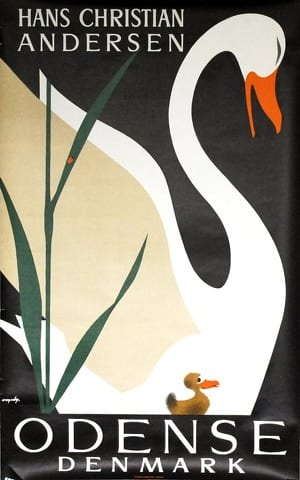In the pre-Internet era, booking a vacation meant a trip to a local travel agent. The agent’s office was filled with colorful, descriptive brochures with lots of destination photos, and the walls were covered with posters designed to beckon prospective travelers to destinations domestic and foreign.
Looking for adventure? Enjoy skiing, sailing or hiking? Interested in experiencing Mardi Gras, the Olympics or Carnival? Posters and brochures were created to convince travelers to take that next step toward adventure.
In addition to travel offices, destination posters could also be found in airline and ocean liner terminals and train stations, serving the same purpose — to enchant clients with the prospect of visiting a major city, a national park or another captivating destination via land, air or sea, or engaging in a once-in-a-lifetime event.
The creative process behind the design of these posters was extensive and strategic. Significant resources were invested in communications teams, artists, designers and printers who would together create stimulating visual images and narratives to increase tourism.
Collectors’ enthusiasm for vintage travel posters is evident in the many websites and collectors guides dedicated to this topic. If you’re a fan of “Antiques Roadshow,” you’ve watched poster expert Nicholas Lowry speak each season about a few examples that show up at the Roadshow sites. In fact, the “Antiques Roadshow” website, www.pbs.org/wgbh/roadshow, is a good source of information for those currently collecting or with a potential interest in collecting vintage travel posters.
ARTISTIC QUALITY
A major reason for collectors’ interest in travel posters is the graphic design/artistic quality. Fortunately for collectors, artists’ names are often included in the poster design or as part of the small print at the bottom of the poster.
Many poster illustrators were well known in advertising and communications circles, and thus to the public, because they also created artwork for magazine covers and advertising campaigns. Their extensive body of work has increased some artists’ popularity with the collecting public.
In addition to graphic/visual quality, poster collectors are avid readers of the information included at the bottom edge of posters by printers. This information typically includes the printer/company name, year and place of printing, and some sort of printer/company mark. Sometimes the artist’s name is found there, as well as the company for whom the poster was designed and the firm that coordinated its creation. These notes at the bottom of posters help to establish authenticity and tell collectors something about the poster’s scarcity.
New collectors should take a look at Coster’s “Vintage Travel” (2015), Rennert’s “Poster Prices” (2009) and Hillier’s “Travel Posters” (1976), among other guides. Information may also be found in many standard annual antiques and collectibles guides, including those assembled by Warman’s, Kovel’s, Antique Trader and Miller’s. Any of these would be good places to start. And, of course, many websites offer useful information and good images. The U.S. Library of Congress has a particularly good website, www.loc.gov/rr/print/coll/travel-posters.html.
Many collectors love the art deco or art nouveau period travel posters, but these can be hard to find in good original condition. More examples may be found from the 1930s to the 1960s. Railroad and airline travel posters are particularly collectible, and these, of course, includes posters for the Pennsylvania Railroad.
REPRODUCTIONS ABOUND
Beware of the many, many reproductions on the market. Modern digital printers have made copying genuine vintage posters much easier than it used to be, so collectors should make every attempt to verify the poster’s age before purchasing.
Useful tools in the identification/verification process include a good, strong loupe; descriptive information on the original poster, including dimensions — since modern reproductions are sometimes not the same size as the original; and paper quality — posters printed in the first half of the 20th century were sometimes on linen and sometimes on cheap paper, making the latter brittle. Having the poster checked by a knowledgeable dealer or another informed collector is also helpful.
PRICING
Turning now to price — as with any collectible, condition matters. Condition, graphic design, subject, artist and rarity are determining factors in value. Posters that have been stored in an acid-free tube, away from moisture and pests, or framed carefully are of course the most sought-after. Since many travel posters hung in offices, terminals and waiting rooms, some wear is not surprising and restoration for small tears and light wear is possible. Examples with extensive tearing, fading and fleabites should be priced accordingly.
It’s not unusual to see vintage travel posters for sale in antiques co-ops for prices starting in the low hundreds of dollars and up.
Poster collectors become collectors because they are enchanted by the graphics, destinations or artists. Or, perhaps their interest began when they inherited examples from family members.
In my case, my grandmother often traveled overseas. The example shown with this column, which features Hans Christian Andersen’s ‘The Ugly Duckling,’ is from her art and poster collection from her visits to Scandinavia. She knew her granddaughter had a particular love for the stories of Andersen, and poster was created in the 1960s for Odense, Denmark, where he was born. The artist, Viggo Vagnby, was a painter and illustrator most famous for his poster of ‘Wonderful Copenhagen,’ created in the 1950s and showing a police officer stopping traffic for a line of ducks. My Vagnby poster is much cherished and reminds me daily of my desire to visit Denmark.
Lee Carpenter is a dealer at Apple Hill Antiques in State College.



